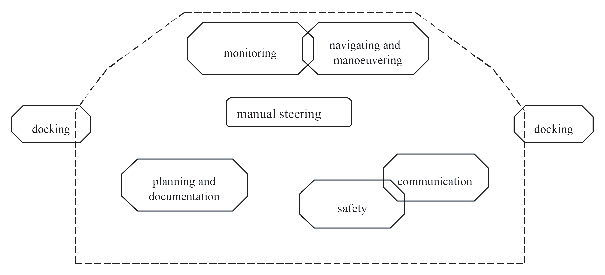Workstation for navigating and manoeuvring:
Main workstation for ship's handling conceived for working in
seated/standing position with optimum visibility and integrated presentation
of information and operating equipment to control and consider ship's
movement. It should be possible from this place to operate the ship
safely, in particular when a fast sequence of actions is required.
Workstation for monitoring:
Workstation from which operating equipment and surrounding environment
can be permanently observed in seated / standing position; when several
crew members are working on the bridge it serves for relieving the
navigator at the workstation for navigating and manoeuvring and/or
for carrying out control and advisory functions by master and/or pilot.
Workstation for manual steering (Helmsman's workstation):
Workstation from which the ship can be steered by a helmsman
as far as legally or otherwise required or deemed to be necessary,
preferably conceived for working in seated position.
Workstation for docking (bridge wing):
The workstation for docking operations on the bridge wing should
enable the navigator together with a pilot (when present) to observe
all relevant external and internal information and control the manoeuvring
of the ship.
Workstation for planning and documentation:
Workstation at which ship's operations are planned (e.g. route
planning, deck log). Fixing and documenting all facts of ship's operation.
Workstation for safety:
Workstation at which monitoring displays and operating elements
or systems serving safety are co-located.
Workstation for communication:
Workstation for operation and control of equipment for distress
and safety communications (GMDSS) and general communications.
See
Fig 1.

Figure 1 Example of function areas